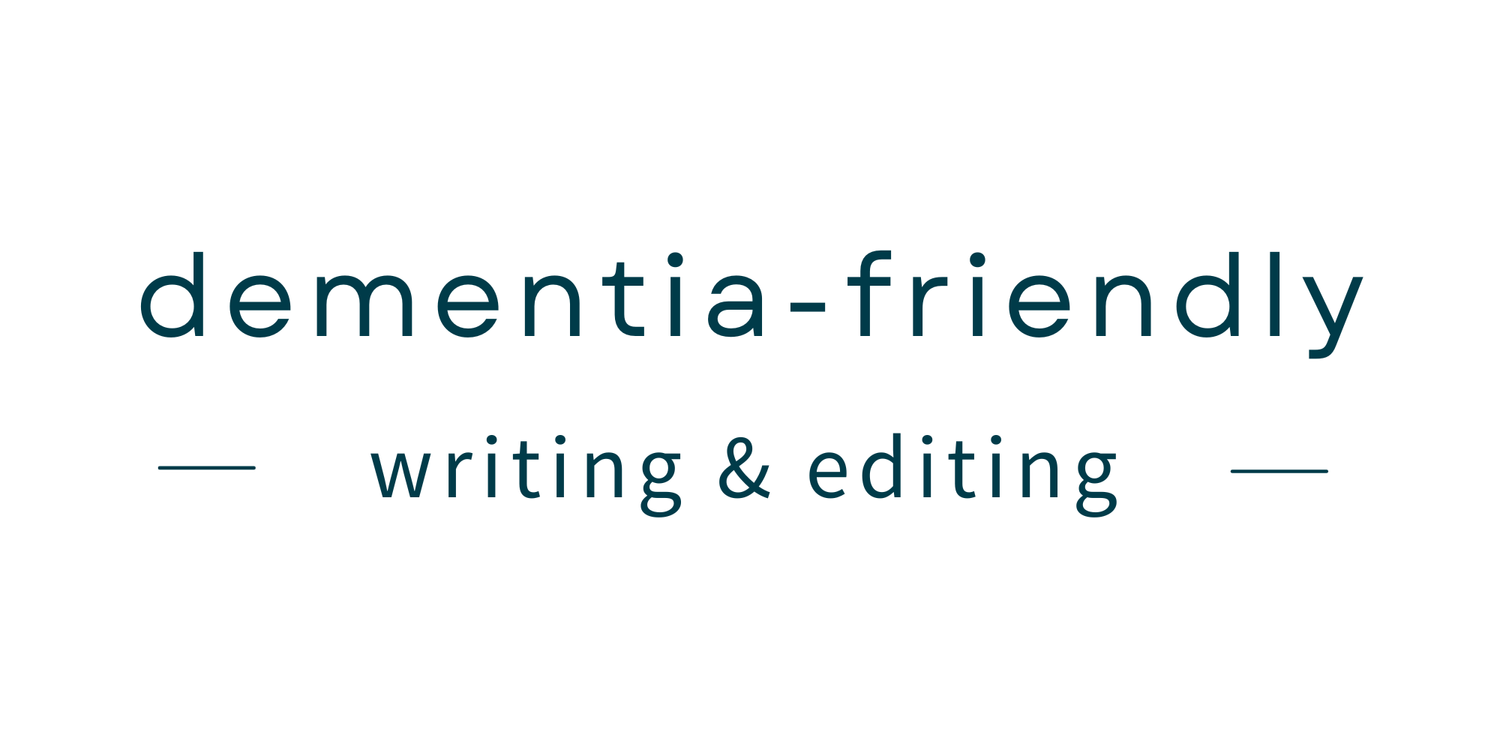Dementia-friendly writing: why do we need it?
Sometimes it seems that modern life requires us to read and process more and more written information.
We don't go into a bank and talk to a person - we use an app.
We don't phone a customer service line - we write notes to a pre-programmed robot on a 'live chat'.
Whether we're phoning our pension provider, our car dealership or our local leisure centre, we're often met with a recorded message telling us that we'll get better, faster service if we look at a website.
If we want to respond to a public consultation about something that affects our life we have to read a pdf and fill in an online form.
There are sometimes advantages to this - we can take our time. We can refer back to information. We can plan what we want to say and how to say it.
But there are big disadvantages. The information isn't tailored to us. It's not easy to ask for an explanation if we don't understand what's written.
It's more important than ever for written information to be clear and accessible to everyone who needs to use it. We're used to making our buildings more accessible. We often provide documents in braille or large-print formats. But we don't always consider people living with conditions that affect cognitive function, such as dementia.
Why do we need dementia-friendly information?
In my previous article I mentioned some of the symptoms that people living with dementia experience.
These can include:
changes to visual perception
difficulty concentrating
challenges in processing information
problems with multi-tasking (for example, switching between screen, keyboard and mouse).
All of these symptoms can make written information harder to process and understand. Dementia-friendly writing can help, by presenting written information in a more accessible way. For example, you could help people with memory problems by providing a bulleted list of key points that they can refer back to. Small tweaks to font size or page design could make information easier to read. Information could be broken up into shorter sentences and paragraphs to help those who find it difficult to concentrate.
Example
The last three sentences above could have been written as a bulleted list, like this:
Help people with memory problems by:
providing a bulleted list of key points to remember
making changes to the font size and page design to make information easier to read
using shorter sentences and paragraphs.
Which version do you prefer?
Over coming weeks I'll be providing more information and tips for making your documents more accessible to people living with dementia.
Next week: Who should be providing dementia-friendly documents?
To think about
There are lots of online videos that simulate some of the challenges that people living with dementia face on a daily basis. For example, “A Walk Through Dementia” by Alzheimer's Research UK (click here to watch on YouTube). Many of these focus on the experiences of older adults carrying out their day-to-day activities, but you can easily apply the information to other areas.

